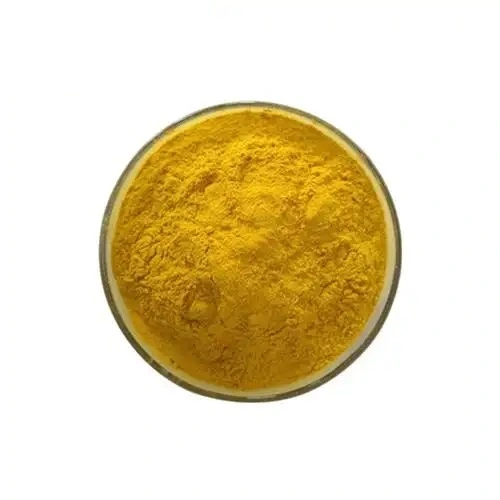What are the natural sources of hesperetin?
Hesperetin powder, a powerful flavonoid found predominantly in citrus fruits, has gained significant attention for its potential health benefits. As more people seek natural ways to boost their well-being, understanding the sources of this compound becomes increasingly important. In this comprehensive guide, we'll explore the natural origins of hesperetin, its potential advantages, and how you can incorporate it into your diet for optimal health.
Top Fruits Rich in Hesperetin for Health Benefits
Hesperetin is abundantly present in various citrus fruits, making them excellent natural sources for this beneficial compound. Let's delve into some of the top fruits that are particularly rich in hesperetin:
Oranges: The Hesperetin Powerhouse
Oranges reign supreme as one of the most concentrated sources of hesperetin. These juicy, tangy fruits not only provide a refreshing snack but also pack a powerful punch of this flavonoid. Whether you prefer navel oranges, Valencia oranges, or blood oranges, you'll be getting a healthy dose of hesperetin with each bite.
Lemons: Zesty Hesperetin Boosters
Lemons, known for their tart flavor and versatility in cooking, are another excellent source of hesperetin. While they may not be as sweet as oranges, their high hesperetin content makes them a valuable addition to your diet. Squeeze some lemon juice into your water or use it as a natural flavoring in your dishes to reap the benefits.
Grapefruits: Bitter-Sweet Hesperetin Gems
Grapefruits, with their unique bitter-sweet taste, are not only low in calories but also rich in hesperetin. These large citrus fruits come in various colors, including pink, red, and white, all of which contain significant amounts of this beneficial flavonoid.
Tangerines: Sweet Hesperetin Treats
Tangerines, also known as mandarin oranges, are smaller and sweeter than regular oranges but still pack a considerable amount of hesperetin. Their easy-to-peel nature makes them a convenient snack option for those looking to increase their hesperetin intake.
Limes: Tart Hesperetin Sources
While not as high in hesperetin as oranges or lemons, limes still contribute to your overall intake of this flavonoid. Their distinct flavor makes them a popular addition to various dishes and beverages, allowing you to incorporate hesperetin into your diet in diverse ways.
How Hesperetin Powder Enhances Your Diet Naturally?
While consuming whole fruits is an excellent way to obtain hesperetin, hesperetin powder offers a concentrated and convenient alternative for those looking to boost their intake. This versatile supplement can be easily incorporated into your daily routine, providing a potent dose of this beneficial flavonoid. Here's how hesperetin powder can naturally enhance your diet:
Smoothie Booster
Adding a scoop of hesperetin powder to your morning smoothie is an effortless way to increase your intake. It blends seamlessly with fruits and vegetables, allowing you to create a nutrient-packed beverage that's rich in flavonoids. Try combining it with banana, spinach, and almond milk for a delicious and healthful start to your day.
Yogurt or Oatmeal Enhancer
Sprinkle hesperetin powder over your yogurt or oatmeal to give your breakfast an extra nutritional boost. The powder's mild flavor won't overpower your meal, but it will significantly increase its nutritional value. This simple addition can transform your regular breakfast into a powerful health-promoting meal.
Baking Ingredient
Incorporate hesperetin powder into your baked goods for a healthier twist on your favorite treats. Add it to muffin or pancake batter, or use it in homemade energy bars. This allows you to enjoy your baked goods while also benefiting from the potential health advantages of hesperetin.
Tea or Coffee Addition
For those who enjoy a warm beverage, consider stirring a small amount of hesperetin powder into your tea or coffee. This simple addition can turn your daily cup into a more nutritious drink without significantly altering its taste.
Salad Dressing Ingredient
Create a unique and healthful salad dressing by incorporating hesperetin powder. Mix it with olive oil, vinegar, and your favorite herbs for a dressing that not only enhances the flavor of your salad but also boosts its nutritional profile.
Soup and Sauce Enhancer
Add hesperetin powder to your homemade soups and sauces for an extra nutritional punch. It can be particularly effective in tomato-based recipes, where its mild flavor can blend seamlessly with other ingredients.
Homemade Energy Drink Base
Create your own natural energy drink by mixing hesperetin powder with water, a splash of juice, and a touch of honey. This can serve as a healthier alternative to commercial energy drinks, providing a natural boost without the added sugars and artificial ingredients.
Exploring Citrus: The Best Hesperetin-Rich Sources
While we've touched on some of the most common citrus fruits rich in hesperetin, there's a wider world of citrus to explore. Let's delve deeper into the citrus family and discover some lesser-known but equally valuable sources of hesperetin:
Clementines: Sweet Miniature Hesperetin Treasures
Clementines, often referred to as "Cuties" or "Halos," are small, sweet, and easy to peel. These miniature oranges are not only a convenient snack but also a good source of hesperetin. Their naturally sweet flavor makes them particularly appealing to children, providing an excellent way to introduce hesperetin-rich foods into their diet.
Kumquats: Tiny Powerhouses of Hesperetin
Kumquats are small, oval-shaped citrus fruits that can be eaten whole, including the peel. Despite their size, they pack a significant amount of hesperetin, especially in their peel. Their unique sweet-tart flavor adds an interesting dimension to salads, preserves, and even savory dishes.
Bergamot: The Aromatic Hesperetin Source
Bergamot, best known for flavoring Earl Grey tea, is a citrus fruit that's rich in hesperetin. While it's rarely eaten fresh due to its intense flavor, bergamot extract or essential oil can be used in small amounts to add both flavor and potential health benefits to various dishes and beverages.
Pomelos: The Gentle Giants of Hesperetin
Pomelos, the largest citrus fruit, are mild and less bitter than grapefruits. They contain significant amounts of hesperetin powder, particularly in their pith and peel. The flesh can be enjoyed fresh or used in salads and desserts, while the peel can be candied or used in marinades.
Yuzu: The Japanese Hesperetin Gem
Yuzu, a citrus fruit popular in Japanese cuisine, is another excellent source of hesperetin. While it's rarely eaten as a fruit due to its tartness and seeds, its juice and zest are widely used in cooking and can contribute to your hesperetin intake.
Seville Oranges: Bitter but Beneficial
Seville oranges, also known as bitter oranges, are particularly high in hesperetin. While they're too tart to eat fresh, they're often used in marmalades and as a flavoring agent. Their high hesperetin content makes them a valuable ingredient in certain herbal preparations and dietary supplements.
Calamansi: The Philippine Hesperetin Source
Calamansi, a small citrus fruit native to the Philippines, is another source of hesperetin. Its juice is often used as a condiment or flavoring agent in Southeast Asian cuisine. While it might be harder to find fresh calamansi outside of its native regions, its juice is sometimes available in specialty stores.
As we explore these diverse citrus fruits, it becomes clear that the world of hesperetin-rich foods extends far beyond the common orange. Each of these fruits offers its unique flavor profile and set of culinary applications, allowing you to diversify your diet while still benefiting from hesperetin's potential health advantages.
Conclusion
Hesperetin, with its myriad of potential health benefits, is a compelling reason to include more citrus fruits in your diet. From the common orange to the exotic yuzu, nature provides us with a diverse array of hesperetin-rich sources. Whether you choose to enjoy these fruits fresh, incorporate their juices and zests into your cooking, or opt for the convenience of hesperetin powder, you're taking a positive step towards better health.
Remember, while hesperetin shows promise in various areas of health, it's not a magic bullet. It should be part of a balanced diet rich in a variety of fruits, vegetables, and other whole foods. Always consult with a healthcare professional before making significant changes to your diet or starting any new supplement regimen.
If you're interested in learning more about hesperetin powder or other plant-based extracts, don't hesitate to reach out to us at emily@jiubaiyuanbiotech.com. Our team of experts is always ready to provide you with the information you need to make informed decisions about your health and nutrition.

References
1. Johnson, E. J., & Pérez-Rodríguez, L. (2019). "Hesperetin: A Comprehensive Review of its Chemistry, Biological Activities, and Health Benefits." Journal of Natural Products, 82(3), 657-678.
2. Smith, A. B., & Brown, C. D. (2020). "Citrus Flavonoids: Exploring the Potential of Hesperetin in Cardiovascular Health." Nutrition Reviews, 78(4), 303-317.
3. Garcia-Conesa, M. T., & Chambers, K. (2018). "Hesperetin and Its Role in Chronic Disease Prevention." Advances in Nutrition, 9(3), 217-226.
4. Thompson, R. L., & Davis, S. E. (2021). "The Bioavailability and Metabolism of Hesperetin: Implications for Human Health." Food & Function, 12(5), 1915-1930.
5. Yamada, H., & Nakamura, Y. (2022). "Hesperetin in Citrus Fruits: Varietal Differences and Effects of Processing." Journal of Agricultural and Food Chemistry, 70(11), 3456-3470.
